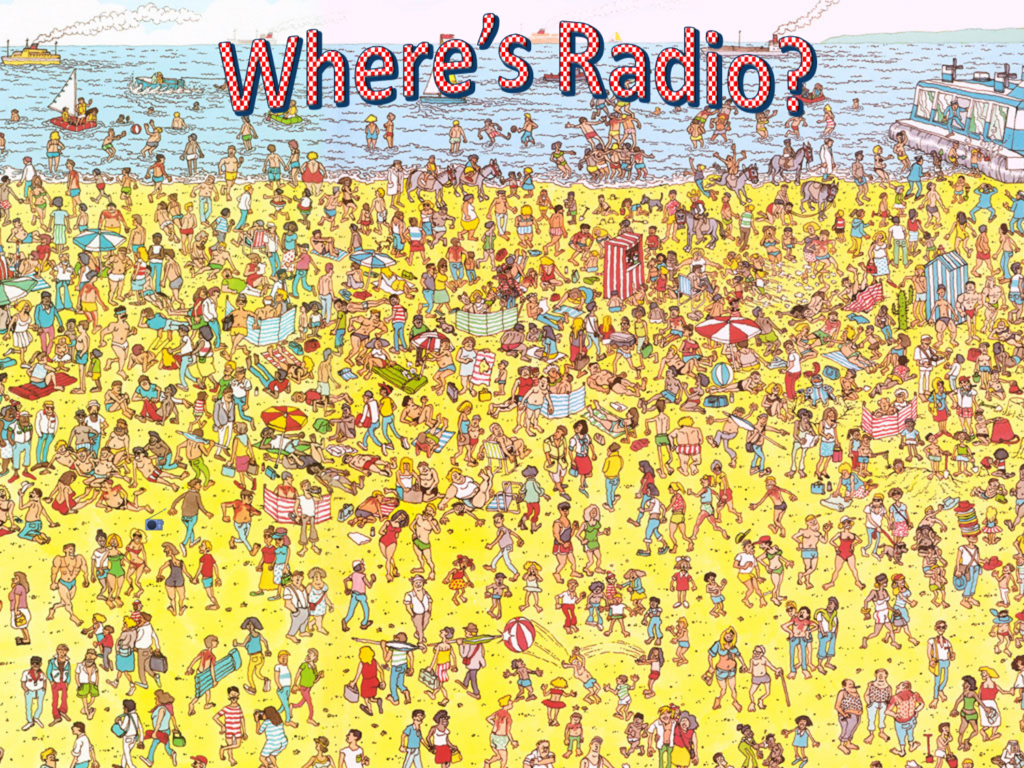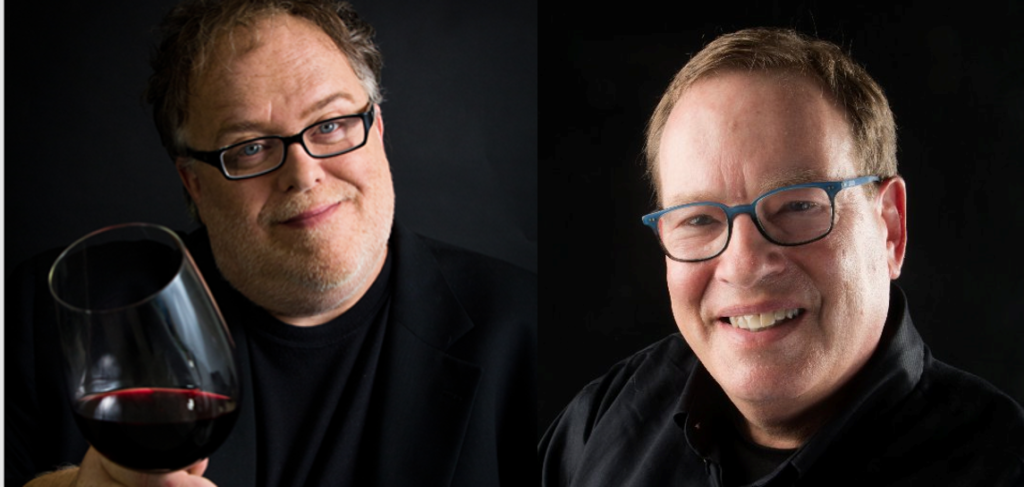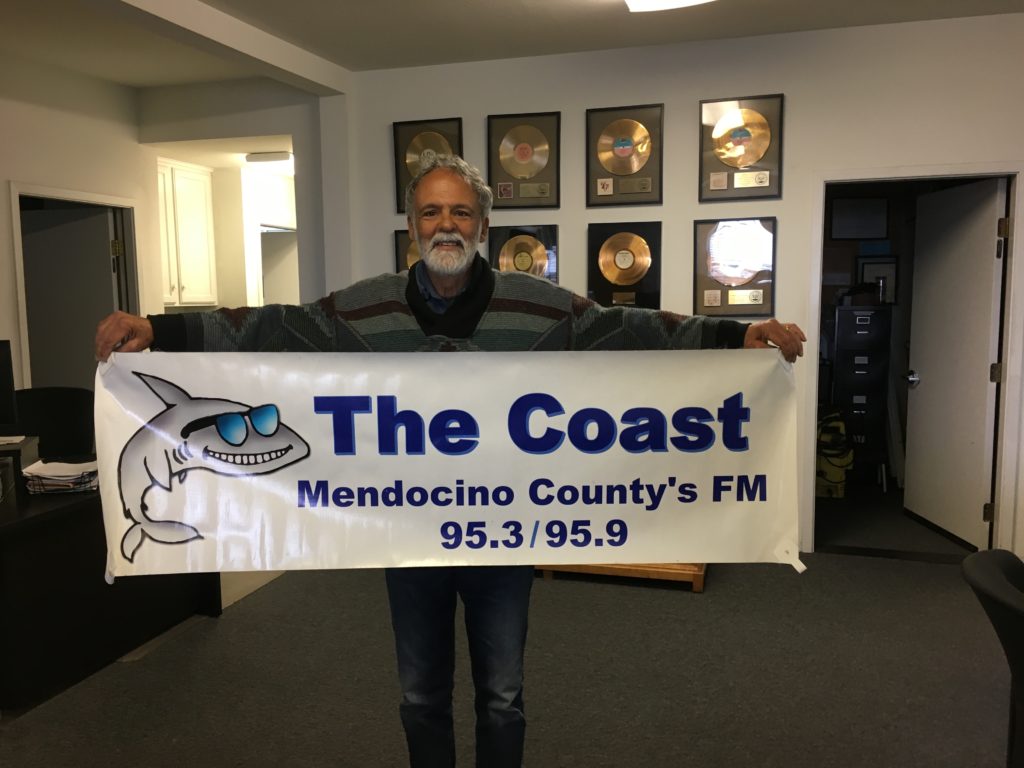
I’ll admit it. I was goaded into writing today’s post.
The other night, Tom Leykis reached out on Twitter, asking me my reaction to radio’s coverage of the San Diego area synagogue shooting. He sent me a story by Ken Lieghton in the San Diego Reader, actually based on a commentary by AllAccess writer Perry Michael Simon.
Leykis is sometimes pigeon-holed as a “shock jock,” but that’s a gross misnomer. Once a superstar of the airwaves, Tom has carved out an amazing career wrapped around subscription streaming, podcasts, merch, and event and wine sales. Yes, you read that right.
Tom has participated in our “Podcast Makeover” session at the Podcast Movement (he’s already agreed to join us again at PM19 in Orlando), and I can tell you that he’s a caring, smart, and insightful person. While he’s been joined onstage by some formidable panelists, I find myself gravitating to what Leykis is talking about. He’s frequently spot-on.
So, I paid attention to this tweet, directed right at me:
@fnjacobs you’re still a big cheerleader for the radio business. What’s your reaction to THIS?https://t.co/BSIvLOGxxn
— Tom Leykis (@tomleykis) May 14, 2019
As you may recall, yet another fatal shooting took place in Poway, adjacent to nearby San Diego. When Perry got the alert, he started tuning around to San Diego news/talk stations – commercial and public – and ended up hearing recorded programs. After all, this vicious incident occurred on a Saturday when most radio station buildings are vacant or occupied by a single person (or babysitter).

I read Leighton’s story, reviewed Perry’s OpEd, and thought about how to respond to Leykis’ tweet.
It didn’t take long for one word to come to mind:
“Sad.”
That’s not a statement about San Diego radio. Or about News/Talk stations, a format I know precious little about. Increasingly, “Where’s radio?” is a fair question to ask when breaking news events occur after hours.
The fact is, this could have happened anywhere. And with the exception of perhaps the largest markets in America, probably would happen everywhere. After all, staffing is tight, weekends are less critical to ratings, and the custom has been set over the last decade or more. On nights, overnights, and weekends, radio broadcasters try to get away with minimum staffing during these non-critical hours.
I’ve railed against rock stations that fail to “go live” when a beloved rock star passes away. And while those are major cultural milestones for many people, they pale in comparison to what happened in San Diego…or Charlotte, Denver, Parkland, Charlottesville, or Aurora. The list is endless. If it hasn’t happened in your market, chances are that sooner or later, it will.
Problem is, when a tragedy of this nature shakes a community, people are trained to turn on the radio to find out what’s going on. Most have probably come to expect that radio will be there, providing on the scene coverage. On weekends and evenings, probably not.
Leykis is right. I am a fan of broadcast radio (something he takes me to task for now and again). And don’t interpret this post as piling on the conversation started by Perry and Leighton. While I strongly believe in the efficacy and value of radio – commercial and public – I also feel that oftentimes, we can do better.
And we must do better. In an increasingly crowded media environment, radio broadcasters must step it up in order to be viable and relevant. Listeners have a right to expect local radio coverage when a tragedy occurs in their hometown. Instead, many San Diegans flipped on the TV, or as Simon points out, tuned to CNN, Fox, or MSNBC audio on SiriusXM.
So, what’s the takeaway here?
Broadcast radio doesn’t need to do a better job telling its story. It needs to get its story straight.
 If it’s going to live up to its heritage, and continue to herald being “live and local,” stations will need to devise emergency plans when these unforeseen events happen at inconvenient times. Oddly enough, many went into place in the days and weeks after 9/11. Sadly, many have been forgotten or simply ignored.
If it’s going to live up to its heritage, and continue to herald being “live and local,” stations will need to devise emergency plans when these unforeseen events happen at inconvenient times. Oddly enough, many went into place in the days and weeks after 9/11. Sadly, many have been forgotten or simply ignored.
On news stations, a reporter or anchor should be on call every weekend – just in case – ready to drop personal plans, drive to the station, and get behind the mic to inform her community in the event of a major breaking news event.
Or local radio clusters need to forge deals with nearby TV stations to at least simulcast their audio when something tragic happens. That’s not a great solution, but it at least ensures that when listeners turn on a news station, they’ll actually hear what’s happening in real time.
I am a frequent presenter at state broadcaster associations around the country. Last year, I spoke at their great conferences in Texas, Alaska, Oklahoma, and others. This would make a great topic for your 2019 conventions – how radio stations across the state – commercial and public – might work together to provide pool coverage when a horrifying local event makes a surprise visit to your community.
More and more companies are bringing their programmers and managers together for meetings and gatherings every year. This would be a great agenda item for those groups as well.
I am convinced this “radio silence” two Saturdays ago could have happened anywhere. It just happened to be San Diego – this time.
And oh, the irony. As I was putting this post “to bed,” I got an email from another California broadcaster, Vicky Watts. She’s the co-owner of KOZT, in Mendocino – the Coast – with Tom Yates. Vicky and Tom left L.A. in 1990 to enter the world of station ownership. They are the quintessential “mom & pop” owners, dedicated to creating radio that’s “locally owned, locally programmed, local personalities, local news.”
the Coast – with Tom Yates. Vicky and Tom left L.A. in 1990 to enter the world of station ownership. They are the quintessential “mom & pop” owners, dedicated to creating radio that’s “locally owned, locally programmed, local personalities, local news.”
Vicky wrote me to tell me their News Director, Joe Regelski, celebrates his 25th anniversary at KOZT next month. Joe’s made a multi-generational name for himself because he’s the guy who’s on the air, giving out information during the power outages and wildfires they’ve experienced in Northern California the past couple years. He’s your quintessential news hound – a guy who takes his job title seriously. If something happens in the region, it’s not a matter of whether he’s on duty – he’s on duty.
Joe recently spoke to a class of young students about his job, what it entails, and what it requires. And after his talk, he received a number of thank-you notes from these kids. Here’s one from young Ella Sweigart that tells the story better than any promo could:

By the way, there’s a radio hidden in plain sight in the “Where’s Radio?” scene at the top of this post. It’s not easy to spot. But that’s the point.
- How Will Radio Fare In The Battle For The Fourth Screen? - April 3, 2025
- Like A Pair Of Old Jeans - April 2, 2025
- What’s Fair Is Fair - April 1, 2025




Sad is a good word to describe it Fred. Lazy might be another. Someone has to “wake up” and realize what’s happening in their city and understand that people are going to want updates on what’s going on. The decimation of news staffs of these stations is certainly unfortunate, but it’s not an excuse. You get your full time talent in the building and cover the story to the best of your ability.
Less is more. When America had fewer radio stations, local community service was greater.
Today, there’s more radio signals beating the airwaves than ever, and yet, local service has all but disappeared.
Radio isn’t dead, but sometimes I wonder about the people running them.
I work in Great Falls, MT. There are not a lot of air personalities here. However, we have come up with a system that we cover EVERYTHING, weekends, weekdays, overnights without too much hassle. We all (6 of us) rotate covering the event over the hours of the weekend or whatever. Most of us are able to do it from home with the help of wave pad and FTP.
You should talk with my GM, Dan Manella. He’s a hell of a radio guy and together, we are bringing local radio back. The truth is in the ratings. Our stations (8 of them) have 88.5% of our county where the competitor (5 stations) covers NOTHING and got the ratings they earned, 11.5% of our country.
Fred: So glad your powerful voice has weighed in with cogent guidance on this critical topic. And now, let me add a dose of reality. I am a certified business continuity and emergency response planner, and for more than a decade, I have served in this role specifically for the broadcast industry. I directed efforts at ABC Television & Radio aimed at creating, testing and implementing emergency plans. And with the Company’s endorsement, I was allowed to teach what I knew to broadcast groups and conferences around the country. I developed planning and exercise templates, compiled lists of vendors offering services and tools to help groups and standalone operators implement robust emergency response plans. And I made sure to offer one-on-one consults at a price point ANY operator or trade group could afford. The result: Virtually NO takers. Effective emergency planning — both operational and editorial — requires some commitment of time, personnel and other resources. And it requires an ongoing commitment to testing and improvement. But most of all, it requires human beings. And if there are no humans to invoke your plan when crises happen, and none available to respond, whatever plan you may have on paper is worthless. THIS is the hard reality. No plan, no people, no practice, no provisions – no chance. Simple as that. The shocking truth is that there are so many things stations can do to prepare for and respond to crisis that cost nearly nothing. I am gladdened to hear that there are still local operators who are walking the walk in addition to talking the talk. But too few are. And until the entire radio industry recommits itself to this critical service obligation, the medium will continue to play second-fiddle to TV and social media when bad things happen.
Fred – Thanks for the mention. Only issue is that the city of Poway is not 20 miles north of San Diego. It is immediately adjacent to San Diego and abuts part of San Diego’s northern border. The iHeart and Entercom studios (which are right across the street from each other) are just down the I-15.
Ken, thanks for the clarification. I will make that correction. Appreciate your story & your comment.
Great post but best of all was the wonderful drawing and kind words from young Ella Sweigart. No doubt we have in her a new radio fan thanks to Joe Regelski’s work on behalf of his community.
It took a few moments but I was able to locate the radio in the drawing. May dear Ella, her classmates, their families, and the communities we serve at large, never need to search beyond their closest radio to find important, relevant information, in times of need.
It hit me hard, too, Dave. These are the moments that restore my faith in radio.
Fred – I realize we’re an exception to the rule. BUT…WHIO AM/FM in Dayton has a live, local news operation around the clock weekdays and virtually around the clock on weekends. When something big happens, we are live, on the scene and break into programming as needed.
Our music stations, though tracked outside AM drive are right on top of important breaking news of interest to the listeners. When Michael Jackson died, WHIO had on air immediately…The Eagle a minute or two later. And we produced tributes and played his music all weekend. (Our competitor had no one in the building…their PD was on a remote, so they had nothing until the following Monday.)
The same happened when Tom Petty died, though we went live and took phone calls that afternoon.
When the Las Vegas Shootings happened, our country powerhouse, K-99.1 FM went live the entire next day taking phone calls from listeners and letting them vent about the tragedy.
Kevin, it is truly market by market, company by company. That’s why I showcased the KOZT situation. But as someone I spoke with yesterday told me (as he was disagreeing with the premise of the blog), what’s lacking is prep and planning. I hope that’s one of the takeaways. Thanks for the note & congrats on all you guys do.
Fred,
Regarding the story on radio not covering the synagogue shooting in San Diego. Its not just because it happened on the weekend. It could of been a weekday. The point is, music stations in no way relate to their community. If the world came to an end tomorrow, don’t turn on your favorite music radio station, because they don’t relate to anything going on locally.
Remember a few years ago when there was a false attack story about Korea attacking Hawaii? It was a huge story on network TV news. I was in Hawaii, when this happened, and no local radio station mentioned this event.
Any city you go to, radio sounds the same. Same formats, no local connection. Lets thank the big companies like I Heart for homogenizing the industry and making all stations sound alike. There is no money in the I Heart budget to hire local newspeople-as the money is all used up to pay Bob Pittman his 13 million dollar a year salary.
So sad, I remember radio when it was local and FUN. When something happened, radio was the first to tell you about it.No wonder less people listen to radio, and are listening to Sirius, or I pods, Pandora, etc. And thank you Bob Pittman and I Heart, for destroying the business that we loved.
Jeff, we blogged about the Hawaii “scare” & it was another one of those moments where many radio stations were generally caught off guard. It is a pattern, but not attributable to any one company IMO. It’s an industry problem. Thanks for the comment.
The Sandy Hook shooting took place about 30 minutes from the studios of WPLR and WEZN.
At first there was a lot of confusion about what had happened but once we understood the severity of the situation, everything changed.
We dropped music on both stations. Our morning shows stayed all day long and we even hired a former local radio newsman on the spot to help us with coverage.
Yes this tragedy was on a Friday but I believe our staff would have done the same no matter when it was.
We, and especially WPLRs morning show Chaz and Aj, have prided ourselves on being there when it matters and not just being the station that plays a lot of Led Zeppelin
And of course, that’s part of the reason PLR has maintained its persona as the market’s station of record. To me, what’s impressive about WPLR (see our blog post on WPLJ today, Keith) is that the determined men and women who have worked their over the decades survived ownership changes and other industry tumult. Congrats to you, Chaz & AJ, and your great team. The market KNOWS that if something happens in the New Haven area, PLR is the station to turn to.
After I initially left a comment I seem to have clicked on the -Notify
me when new comments are added- checkbox and from now on every time
a comment is added I receive 4 emails with the exact same comment.
Perhaps there is a means you are able to remove me from that service?
Appreciate it!